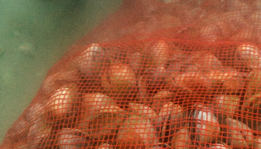Southern Clams is taking the fresh taste of New Zealand seafood to the world. Catherine Beard explains why they’ve been so successful in capturing markets.
It was while he was overseas that Roger Belton first had the spark of an idea that led to what is now a thriving New Zealand seafood business – Southern Clams.
“Back then, in the 1980s, I perceived that there were a lot of high-end food products in New Zealand that, if developed, would have value elsewhere in the world.
“The natural resources were the easiest to focus on rather than complicated things such as cheeses. So I started with what New Zealanders call cockles – known elsewhere as clams. I believed these would work because I’d seen them in North American and European markets and restaurants, where they had a high value.”
Back in New Zealand, Roger could see lots of untapped potential and set about focusing on the higher end restaurant trade. “Targeting niche markets meant I could avoid being in a sea of commodities where price is king.”
Roger found that niche markets are different according to different cultures, so has focused on being responsive to those niches.
“I make a point of trying to visit most clients at least once a year – which means a lot of travel. There’s always a fairly long chain between the production of a product and the consumer – and a lot of valuable information can get lost in transmission. If there are five or six different parties in the chain, as a producer it’s really important that you can cut through that and have more direct contact with the consumer.
“While I don’t usually have contact with the consumer eating the seafood, I do with the people selling them the shellfish – the retailers and restaurants.”
As all exporters know, when starting out it’s imperative you find an import agent who is the best channel for the products you want to find a market for. Roger found selecting the best channel particularly difficult in China. Here are his top tips:
• Spend time on the terrain; learn as much as possible about the culture and the systems. This is a lot easier in Europe than in Asia – especially with food products because the values assigned to foods are tied to the cultural context. So if you don’t understand that cultural context, it’s very difficult to put your product in the optimum position.
• Find a good agent. I started by providing product to New Zealand exporters who already had channels open. As demand grew, we had direct approaches from buyers in the countries we exported to. Then we developed a direct export to those markets and ended up forming a subsidiary company that focuses exclusively on exporting seafood to niche markets in North America, the UK and Asia.
• Understand the market’s needs and wants. If you can satisfy that demand and respect the requirements that may not be explicit, and service that demand, then in a sense one doesn’t have to do any marketing because you’re offering the complete delivery of a product for which there’s a strong demand.
Roger believes a focus on quality and delivery gives Southern Clams its competitive edge, not only in New Zealand but all over the globe.
“We’re focused on developing channels that work for delivery of a live, highly perishable product,” he says. “We guarantee at least a week’s shelf-life on delivery anywhere in the world.”
Catherine Beard is executive director of ExportNZ. www.exportnz.org.nz




